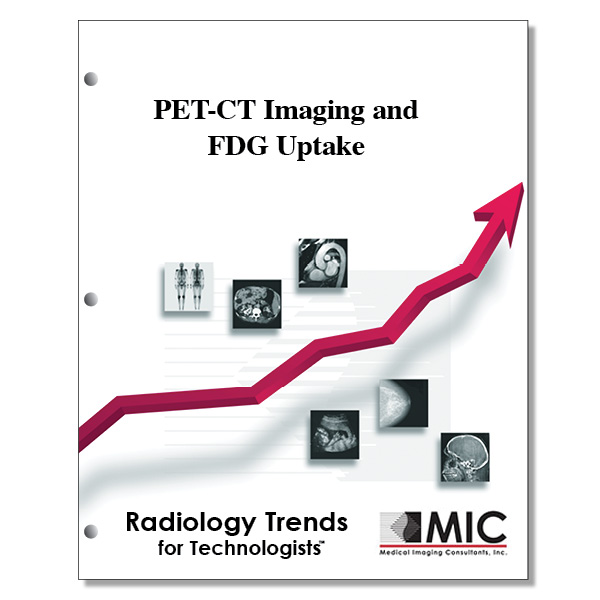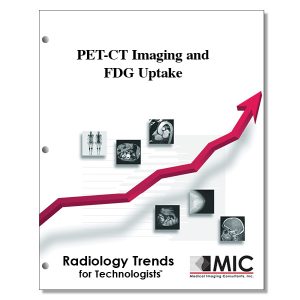

PET-CT Imaging and FDG Uptake
The use of fused PET and CT images in differentiating physiological from pathological FDG uptake is presented.
Course ID: Q00183 Category: Radiology Trends for Technologists Modalities: CT, Nuclear Medicine2.5 |
Satisfaction Guarantee |
$29.00
- Targeted CE
- Outline
- Objectives
Targeted CE per ARRT’s Discipline, Category, and Subcategory classification:
[Note: Discipline-specific Targeted CE credits may be less than the total Category A credits approved for this course.]
Nuclear Medicine Technology: 2.50
Procedures: 2.50
Endocrine and Oncology Procedures: 2.50
Registered Radiologist Assistant: 2.50
Procedures: 2.50
Abdominal Section: 0.75
Thoracic Section: 0.75
Musculoskeletal and Endocrine Sections: 0.25
Neurological, Vascular, and Lymphatic Sections: 0.75
Radiation Therapy: 1.75
Patient Care: 1.75
Patient and Medical Record Management: 1.75
Outline
- Introduction
- Sites of Physiologic FDG Uptake
- Physiologic versus Pathologic FDG Uptake in the Head and Neck
- Physiologic versus Pathologic FDG Uptake in the Chest
- Physiologic versus Pathologic FDG Uptake in the Abdomen and Pelvis
- Conclusion
Objectives
Upon completion of this course, students will:
- understand the purpose of the article
- know what types of information CT provides
- know what types of information PET provides
- knowwhat types of information FDG provides
- know why CT and PET are combined
- be familair with how FDG is taken up
- identify normal FDG accumulation
- identify abnormal FDG accumulation
- be able to describe why specificity is increased when using PET/CT
- be able to describe why sensitivity is increased when using PET/CT
- be familiar with the pitfalls of PET imaging
- know what organ demonstrates the most normal uptake
- know why the brain demonstrates intense FDG uptake
- be able to identify what the primary substrate for the myocardium is
- understand why FDG accumulates in the myocardium
- know what factors will reduce myocardial FDG uptake
- understand why FDG is seen in the urinary tract
- understand what environmental factors can change the outcome of the PET scan
- understand what patient’s physical factors can change the outcome of the PET scan
- know what muscles can show uptake due to breathing
- know the parts of Waldeyer’s ring
- be familair with what affects FDG concentrations in the saliva
- be familiar with the origin of muscle uptake in the neck
- understand how muscle uptake can inhibit scan interpratation
- know what causes thymic regression
- understand why brown adipose tissue takes up FDG
- understand what can reduce the appearance of brown adipose tissue
- understand why PET/CT imaging is not always useful
- be familair with reasons for FDG uptake in the gallbladder
- know what misdiagnoses ureter uptake of FDG can lead to
- be familiar with what diseases can affect normal uptake in other organs
- understand why CT is an important correlative tool
- understand the importance of proper patient preparation
- know why fusion software using two different scanners is not as good as PET/CT
- be familiar with how patient motion can affect the scan
